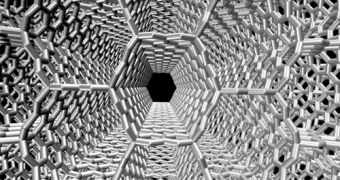The purpose of such a research was that of examining the dielectric susceptibilities of nanostructures. The dielectric susceptibility represents a response to the polarization of a given material, when an electric field is applied. Nanostructures seem to possess properties that are contradictory to those of normal materials, properties which could give engineers the possibility of building new electronic devices.
Ponomareva and her colleagues from the University of Arkansas, observed high dielectric responses in nanostructures while applying an electric field, which could be used to build extremely sensitive equipment. The lead zirconate nanostructure, a ferroelectric material, exhibits electrical polarization well after the electric field has disappeared.
Unlike the large scale materials, at the nanoscale, the material presents three different responses, including the change of polarization when an external electric field is applied, property called external electric susceptibility, and the change in polarization with respect of the internal field, called internal susceptibility. The third response is called intrinsic susceptibility, and represents a property associated with the material the nanostructure is made of. The first two responses correspond mainly to the shape of the nanostructure, whether this is a nanorod, nanodot or a nanofilm.
While trying to determine the internal susceptibility of the nanostructure, the researchers determined that it had a negative value, meaning that a positive internal electric field will produce a negative polarization in the material, contradicting what was previously thought. Scientists thought that finding a negative susceptibility meant that the system is unstable.
The material was then tested by using electrodes with different efficiencies. They first tested the nanostructure by using one hundred percent efficient electrodes, after which they switched to less efficient ones. By processing the data from the experiment, Ponomareva showed that the highest external dielectric response occurred when they used electrodes with 90 percent efficiency, indicating the point at which the nanostructure could be easily manipulated by using external electric fields.
The electric susceptibility of a material represents how easy that material can polarize in response to an electric field. In turn, the electric susceptibility determines a parameter called electric permittivity of the material which influences other phenomena, such as the capacitance of a capacitor of the speed of light through that material. The newly found properties of the nanostructures could be used to create powerful electronic devices.

 14 DAY TRIAL //
14 DAY TRIAL //